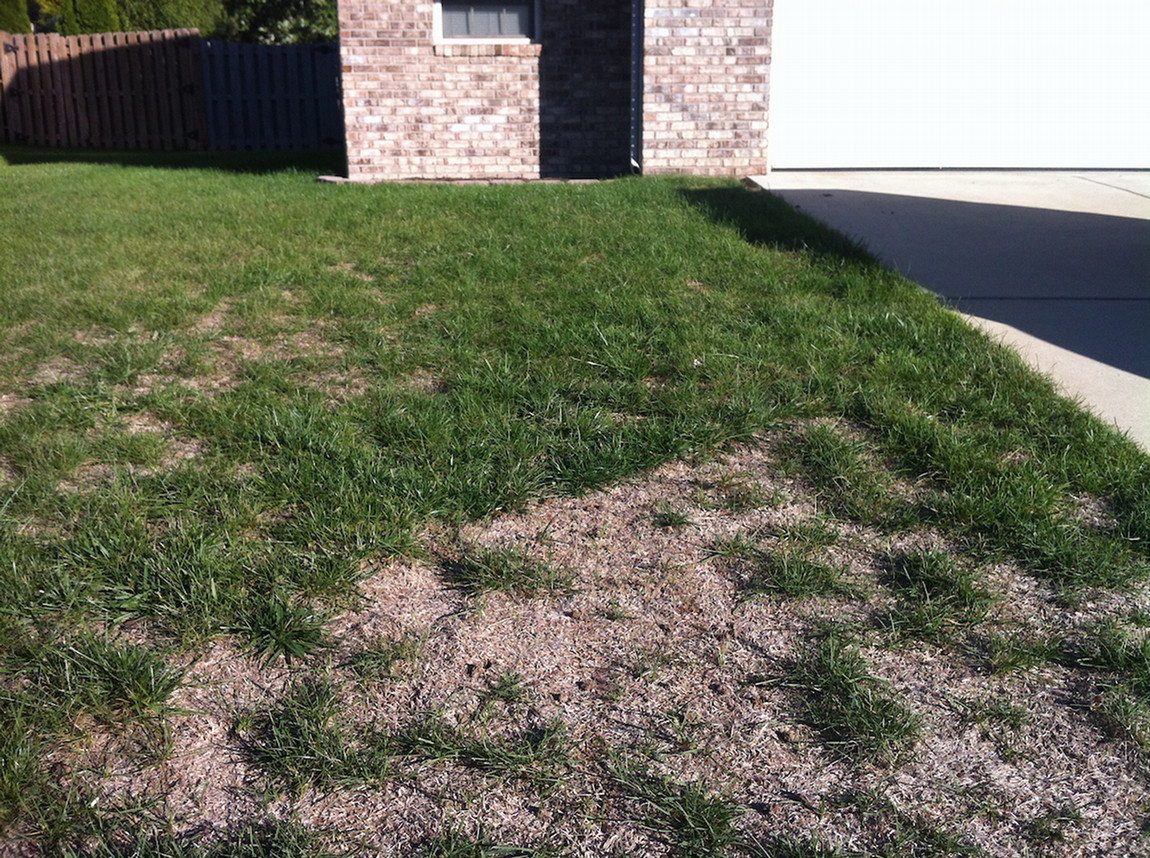Managing Grain in the Spring
It’s getting to be quite a challenging start in the year from getting out of a late wet harvest season to now dealing with the disruptions of life and services as we know it due to the COVID-19 pandemic. I would like to use this article to address some issues related to managing stored grain in the spring. This article will focus on:
- Drying grain that was not adequately dried when it was binned in the fall or winter
- Monitoring and managing grain in storage through the spring into the summer
- Safely unloading grain from your bin
Drying grain that was not adequately dried when it was binned in the fall or winter
First of all, it is important to know what moisture content you need to be storing your grain at given your short and long-term marketing plans. How long you intend to store your grain will determine the level of moisture content to store your grain. Table 1 (located at bottom of the article) provides a guideline on maximum moisture contents at storage periods from up to 6 months to over one year for various grain types. Note that the longer you intend to hold your grain, the lower the level of moisture you need to be. This is very important especially if you would be storing your grain through the warm summer months when managing grain becomes more challenging, and the potential for insect and mold problems increases. Please note the caveat below the table headline – reduce safe storage moisture content by 1% for poor quality grain.
So what should you do if you were unable to dry your corn or soybean in the fall or winter to the safe levels indicated on the table? This is the time you need to begin implementing natural air/low-temperature drying using your aeration fans, and/or with a little addition of heat if you have burners on your fans. Typically, you will not accomplish drying in a reasonable amount of time for the fan run-time hours used if the air temperatures are below 40oF and humidities are above 70%. As the temperatures warm up in the Spring, ambient air temperature becomes more favorable for drying using natural air. Natural air drying is recommended if your grain was binned at 18% moisture and you need to remove about 3 to 4 percentage points of moisture. Otherwise, if you need to dry grain that is 19% or more, you should consider using a low-temperature in-bin dryer (aeration with the addition of heat, +5-10oF) and a high-temperature dryer (180oF or more air temperature), especially for higher moistures to get moisture down as quickly as possible. Shallower grain fill depths or larger diameter bins favor in-bin drying. This is because the storage life of your grain reduces with increasing temperature and grain moisture content. The warmer the weather becomes the faster your grain loses storage life if held at higher than safe moisture levels. Care needs to be taken to dry soybeans in order to prevent split beans. Ensure than drying air humidity levels are not below 40% when drying soybeans with medium (120-140oF) or high-temperatures (160-180oF).
Check the following before and during drying your grain:
- Turn on your fans and be alert to check for an odor that indicates active deterioration. If active deterioration has begun, you should consider using a high-temperature dryer and moving the grain out of the bin to market sooner than later.
- Check to see if there are signs of molding, crusting or germination on the surface of the grain by looking down from the manhole on the roof. Molding or crusting can be recognized by discolored black patches on the grain. Black moldy patches are not easily discernible. Before you open the manhole, run your fans for at least 30 minutes to ensure you exhaust any lethal gas build-up in the bin. Inhaling very high CO2 levels, which can be caused by grain spoilage can be lethal. Also, make sure that you have at least two persons with you on the ground before opening the manhole.
- If you did not core the center of the bin when it was being filled, you should consider doing this now. Coring reduces the levels of the broken kernel and foreign materials, which lodge at the center of the bin during filling and helps improve airflow through the grain bulk. Coring helps ensure air flows through the center of the bin, which reduces the possibility of spoilage and blockage during unloading. A rule of thumb when coring a bin is to pull out 1/3 to 1/2 the bin diameter so that you have an inverted cone at the surface (See Figure 1 at bottom of article).
- Do not run your fans when it is raining or it is foggy. The ambient air condition during these periods will rewet the grain rather than dry it. Take advantage of warm good sunshine days to run your fans.
- The expected fan runtime to dry your grain using natural air in-bin drying depends on the initial grain moisture, airflow (having at least 1 cfm/bu is good) and air properties (warm low RH air is good). Monitor to see the drying front has gone through the whole grain bulk by regularly pulling samples from your bin, probably weekly using a grain probe (trier). While you will not be able to sample every depth, it is important to ensure that the drying front reached the grain surface. In a positive pressure aeration system, where fans push air from the bottom of the bin, the drying front progresses from the bottom up. The goal is to move the drying front as fast as possible through the grain mass. So pull samples weekly from the top of the bin to a depth of up to 6 ft if possible, using a grain probe (trier) to monitor the progress of drying. Pull grain samples from the bin center and a radial distance about half-way from the center to the bin wall. If you have temperature cables in your bin, closely monitor grain temperatures across the bulk to determine if the grain is equilibrating to ambient conditions or heating up above ambient. Some temperature cables in newer grain monitoring systems also have RH sensors that determine grain equilibrium moisture contents as well and can be used to track the progress of the drying front.
- Once you have achieved your target moisture, your goal should be to cool back your grain bulk by aeration to preserve storage life, slow insect pest development and reduce the risk of spoilage. Take advantage of cool spells during the spring to cool the grain bulk. Also, turn over the air in the headspace to prevent condensation at night by running the fan exhausts on the bin roof for 1 to 2 hours. The purpose is to remove the warm humid air that builds up in the headspace at daytime, which condenses on the cool bin roof surface or grain spouts at night and drips back unto the grain surface.
Monitoring and managing grain in storage through the spring into the summer
It is important that you be proactive in managing your stored grain through the spring and summer. Remember that even when you have grain stored at a safe moisture content, storage problems could still occur from an undetected leakage that results in hotspot development or surface crusting and spoilage from condensation. Proactive management involves constant monitoring to make sure that your grain is still in good condition. First, for grain that was binned after drying to safe moisture, spring management involves ensuring you maintain the cool temperatures achieved from winter aeration. It would be necessary to cover your aeration fans to prevent passive warming up of the plenum and bottom of the bulk when fans freely spin from the wind. To control condensation, it would still be necessary to run the exhaust fans on the bin roof at night, which only turns over the air in the headspace and doesn’t warm up the entire grain bulk.
Monitoring is difficult without taking measurements of the grain bulk condition that indicates the condition of grain bulk. Should you have temperature cables in your bin, recording these temperatures on a continuous basis is a good way to track the condition of the grain. Constant tracking of grain temperatures by using software that logs data hourly and presents the data in a format, for example, the temperature at various depth in the bulk over time, and comparing to the ambient is better than manual readings and logging of data. The history of temperature data of the bulk provides more insight than the particular temperature of the bulk on a given day. Remember, the grain bulk temperature changes based on the ambient air conditions used to aerate the bulk. Because grain is a good insulator, it does hold its cool temperature once it's been cooled and it takes time to warm back up as the ambient temperature warms up in the spring. Should the bulk or a section of the bulk show signs of warming up faster than the ambient, this is a sign that active spoilage is occurring. Aeration will help retard the rate of deterioration in the event of active spoilage, but will not stop it. Consider moving the grain to market when you detect that active deterioration might have begun in your bin.
The presence of deterioration can be monitored by measuring the level of CO2 in a grain bin. The rate of CO2 production from a grain bulk depends on the grain moisture, temperature and levels of mechanical damage, fines or broken corn. For the most part, the grain is a living organism and will respire giving off CO2. However, high levels of grain moisture and temperature promotes mold growth such that CO2 production in high moisture corn is dominated by mold consumption of carbohydrates in the presence of oxygen, with CO2, water and heat produced in the process. CO2 levels exceeding 600 ppm and climbing is an indication of poor storage conditions and levels exceeding 1,000ppm indicate active deterioration is occurring. While CO2 monitoring will indicate poor storage conditions earlier than temperature cables would, the challenge with its use is how to quantify the level of deterioration occurring and how to integrate monitors into storage bins. The use of portable CO2 monitors for measuring CO2 levels from fan exhausts on bins or grain piles using negative pressure aeration is systems is easy to implement, but more challenging with positive pressure aeration systems where exhausts are on the roof. To conclude, it is important to view the goal of monitoring as being proactive to detect when conditions are favorable for deterioration to occur so that timely measures can be taken to retard its progress or move the grain to market, rather than determine when active spoilage has begun. Also, note that sampling grain biweekly to determine moisture content is also a good monitoring practice, but most be implemented with extreme care because you would need to enter a confined space. If the grain has been removed from the bin, entering the bin to sample grain can be hazardous and should be done with extreme caution. In all situations with entering a bin to sample grain, you must first determine that the surface has not bridged; that is having a crusted solid surface below which lies an air pocket. Use a long pole to poke the center and various parts of the grain surface to make sure the surface is not bridged. Entering a bin must be done with careful planning, conveying auger lock-out/tag-out procedures in place, and in the presence of 2 or more people.
Safely unloading grain from your bin.
It is important that you are able to safely unload your bin to move your grain to the market when you want to do so. Because of the wet conditions during the harvest in the fall/winter, and the challenges many encountered with drying grain to a safe moisture, we might experience more challenges with unloading grain bins this year. Blockages of unloading pits, jammed augers, crusting, compacted grain and grain stuck to bin walls may be a common occurrence in grain bins this year. This will result in situations where farmers and or personnel are forced to enter bins to dislodge grain. First remember, a grain bin is a confined space and poses a hazard to personnel working inside it. Follow recommended guidelines for safely working in grain bins; never work alone. Make sure you discuss the dangers and precautionary measures taken while working around grain bins with your family and all your staff. Never enter a grain bin when the unloading auger(s) is/are still on. Practice log-out/tag-out procedures for your unloading augers before anyone enters the bin. Ensure that there are at least 3 persons and that the person entering the bin is tied to a lifeline and has the proper gear (respirator and harness). Try to dislodge grain stuck to the walls using a long pole from outside the bin rather than entering to dislodge from inside. Grain stuck to bin walls can easily avalanche and bury a person below once it becomes loose. Again, think seriously of ways to safely dislodge grain from outside the bin when unloading bins rather than from inside. Never jump into a mass of grain static or flowing, and never work alone in a grain bin. Another thing to consider is to warm-up grain to the ambient air temperature prior to unloading it, in order to prevent condensation of moisture on cool grain during unloading on a warm day. For small loads, you may need to unload to ground for feed, don’t warm up the whole bin, but rather warm up the small load after unloading. Remember, the longer you keep grain cold, the better it would preserve both from mold and insect pests. Lastly, it might be a good idea to move some grain out of the bin from time to time to loosen up the bulk. The grain pulled-out can be put back or moved to another bin especially if you have a spare bin to move grain into. Overall, practice safety first and take time to think through what you are doing before you act. While social distancing may keep us safe from the COVID-19 virus, calling up your neighbor, county extension office or co-worker to discuss your options before you enter your bin could very well prevent you from endangering yourself.






